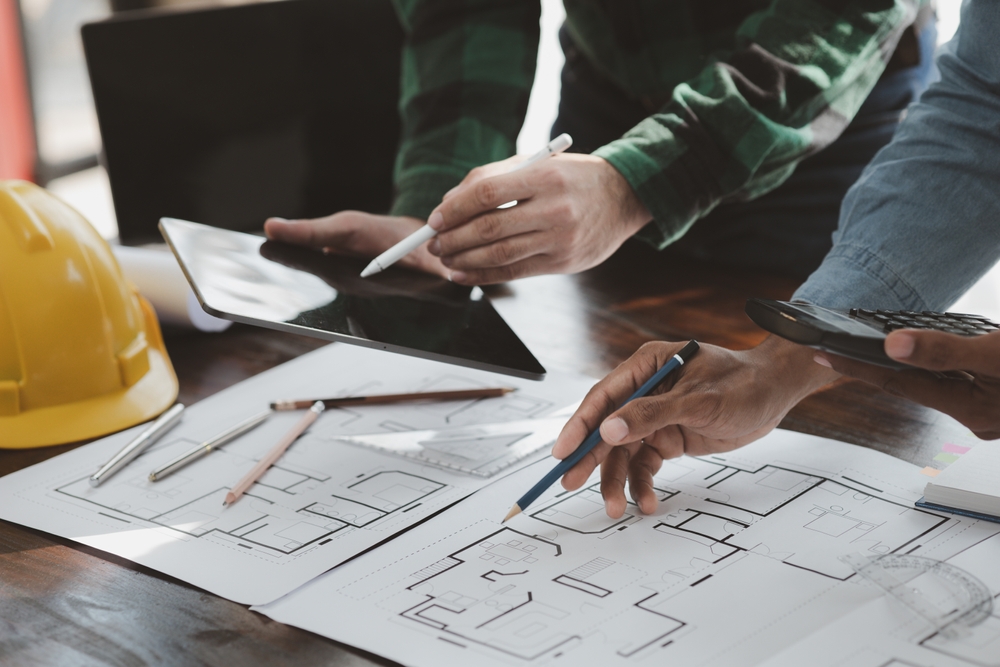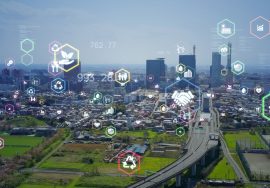The Role of Technology in Revolutionizing Construction

Role of Technology in Revolutionizing Construction: The construction industry is undergoing a significant transformation thanks to the rapid advancements in technology. From improved project management to cutting-edge building techniques, technology is reshaping how construction projects are planned, designed, and executed. This revolution is not only enhancing productivity but also driving sustainability, safety, and innovation across the industry.
Why Technology is Critical to Modern Construction
In a world that demands faster, more efficient, and sustainable construction processes, technology plays an essential role. Traditional construction methods often suffer from inefficiencies, delays, and resource-intensive practices. However, emerging technologies are providing solutions to these challenges, enabling companies to:
- Complete projects faster and more cost-effectively
- Improve the quality and precision of construction
- Reduce waste and environmental impact
- Enhance collaboration and decision-making
Key Technologies Revolutionizing Construction
1. Building Information Modeling (BIM)
Building Information Modeling (BIM) is a digital representation of the physical and functional characteristics of a building. This technology allows construction teams to create detailed 3D models of a project, which include every component, from structural elements to HVAC systems.

Benefits of BIM:
- Improved collaboration: BIM allows architects, engineers, and contractors to work on a single, centralized model, reducing misunderstandings and errors.
- Cost and time savings: By simulating different design scenarios, BIM helps optimize resources and minimize costly design changes during construction.
- Sustainability: BIM enables better energy analysis and performance simulations, helping to create energy-efficient and environmentally-friendly buildings.
2. 3D Printing
3D printing is one of the most innovative construction technologies in recent years. This technique involves using automated machines to “print” building components layer by layer using materials such as concrete, plastic, or composite materials.
How 3D Printing is Changing Construction: Role of Technology in Revolutionizing Construction
- Speed: Entire building components can be printed in a fraction of the time it would take using traditional methods.
- Cost-effectiveness: By reducing labor costs and material waste, 3D printing lowers overall project expenses.
- Customization: 3D printing allows for complex and unique designs that would be difficult or impossible to achieve with conventional construction methods.
For more on the impact of 3D printing in construction, explore this guide on 3D printing technology.
3. Drones
Drones, or unmanned aerial vehicles (UAVs), are transforming the way construction sites are monitored and managed. Equipped with cameras and sensors, drones provide real-time aerial footage, helping teams assess progress and identify potential issues.
Benefits of Drone Technology: Role of Technology in Revolutionizing Construction
- Site surveying: Drones can survey large areas quickly, providing detailed topographical maps and site assessments.
- Improved safety: By inspecting hard-to-reach areas, drones minimize the need for workers to perform dangerous tasks, reducing the risk of accidents.
- Progress tracking: Drones offer real-time monitoring, helping project managers stay on top of deadlines and construction milestones.
4. Artificial Intelligence (AI) and Machine Learning
Artificial Intelligence (AI) and machine learning are being increasingly used in construction to improve decision-making, optimize resource allocation, and predict potential issues before they arise. AI-powered tools can analyze vast amounts of data from past projects, providing valuable insights to improve future performance.
Applications of AI in Construction:
- Predictive analytics: AI can forecast project delays, budget overruns, and material shortages, helping teams plan more effectively.
- Automated design: Machine learning algorithms can generate design suggestions based on specific project parameters, improving efficiency and accuracy.
- Safety management: AI systems can monitor construction sites for hazards, alerting workers and project managers to potential safety risks.
5. Augmented Reality (AR) and Virtual Reality (VR)
Augmented Reality (AR) and Virtual Reality (VR) are changing the way construction projects are designed, visualized, and executed. AR overlays digital information onto the physical world, while VR creates fully immersive, virtual environments.
How AR and VR are Used in Construction:
- Design visualization: VR allows clients and project stakeholders to “walk through” a building design before construction begins, making it easier to spot potential issues.
- Training and safety: AR can be used to train workers by simulating real-world scenarios, helping them practice tasks in a safe environment.
- Enhanced collaboration: AR enables remote collaboration, allowing teams to review and modify designs in real-time, even from different locations.
6. Robotics
Robotics is revolutionizing construction by automating labor-intensive tasks like bricklaying, welding, and material handling. These robots increase efficiency and precision while reducing the risk of human error and fatigue.
Key Advantages of Robotics in Construction:
- Speed and precision: Robots can work faster and more accurately than humans, reducing construction times and ensuring higher-quality results.
- Cost reduction: Automation reduces the need for manual labor, lowering overall project costs.
- Improved safety: Robots can perform dangerous tasks, such as working at heights or in hazardous environments, reducing the risk of accidents.
7. Sustainable Construction Technologies
The push for sustainable construction is driving the adoption of green technologies that minimize the environmental impact of buildings. These technologies include energy-efficient materials, renewable energy systems, and smart building technologies.
Examples of Sustainable Construction Technologies:
- Green building materials: Eco-friendly materials like bamboo, recycled steel, and cross-laminated timber (CLT) are being used to reduce carbon footprints.
- Renewable energy: Solar panels, wind turbines, and geothermal systems are becoming more common in modern construction to provide clean energy solutions.
- Energy-efficient designs: Smart HVAC systems, energy-efficient windows, and passive design techniques help buildings consume less energy.
Conclusion
Technology is at the forefront of revolutionizing the construction industry. From BIM and 3D printing to AI and sustainable building practices, these innovations are reshaping how we design, construct, and manage buildings. By embracing these cutting-edge technologies, construction companies can improve efficiency, reduce costs, and contribute to a more sustainable future.
For more information on how technology can enhance your construction projects, contact us for expert consultation.
Read more related articles to enhance your knowledge and make informed decisions
10 Essential Steps in the Building Construction Process
How to Choose the Right Materials for Your Construction Project







